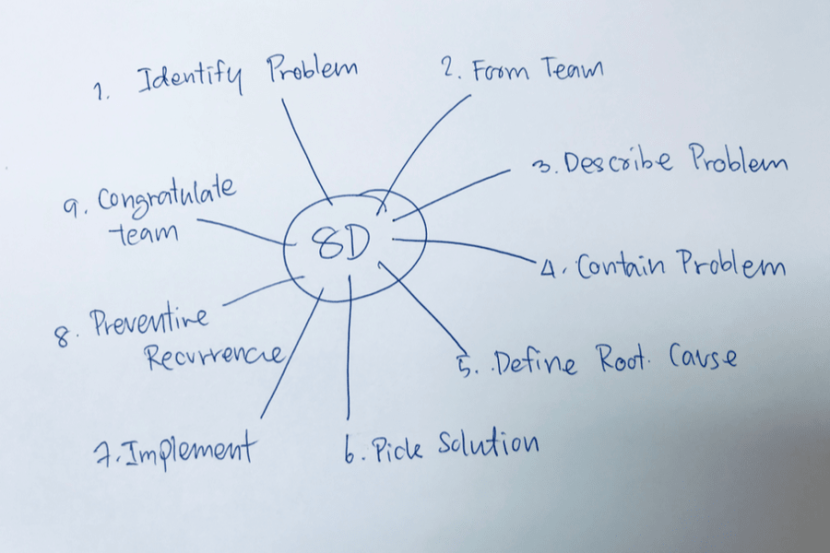Demystifying Root Cause Analysis: Key Steps to Approach Problem Solving
By Geoff Farrell
Root Cause Analysis (RCA) is a systematic method of problem solving that can be used to identify and resolve core issues that can cause a food safety incident, such as foodborne illness outbreak, processing failure or product contamination. By conducting an RCA, businesses can better understand the causes of nonconformity, deviation or other adverse effects in their food safety program. Doing so can help to determine the necessary steps to correct the root causes so that issues do not occur again.
While several factors can contribute to the occurrence of a food safety incident, oftentimes there is a specific root cause that is the underlying reason. RCA applies to all SQF programs and is mandatory in every program. RCA can be used to resolve non-conformances (NCs) issued at food safety audits, ranging from documentation NCs to facility NCs.
Using RCA can strengthen quality risk management and investigation processes.
Using RCA can strengthen quality risk management and investigation processes. An RCA includes a series of five steps:
Step 1: Define the Problem
List the details around the incident and note as much information as possible. Create a timeline of events leading up to the incident and list all parties involved.
Step 2: Collect Data and Investigate
Identify data sources, gather as much information as possible about the incident and assess it from all angles. This step may include interviewing involved parties, understanding those who were or may be impacted and exploring the existing or potential impacts of the incident.
Step 3: Identify All Causes
Using the data collected, identify all possible causes that may have contributed to the incident. Develop preliminary hypotheses and explore the contributing factors. Categorize factors and the systems that may have caused the incident to occur.
Step 4: Identify Root Cause
Based on the contributing factors, determine which factor is the root cause. This can be determined by identifying which factor would have prevented the incident from reoccurring if it were corrected.
Step 5: Implement Preventative and Corrective Actions
Determine what actions must be taken to prevent the incident from occurring again. This could include changing or updating the standard operating procedures, improving monitoring or quality assurance systems, increasing employee training or safety measures or implementing additional quality checks.
Example: Corrective Action: Inform employees not wearing hairnets to wear them. Preventative Action: Purchase larger hairnets as an additional hairnet choice for facility.
Root Cause Analysis Benefits
There are numerous benefits for businesses that use RCA in their food safety program. First, identifying the root cause of an incident can help to develop a permanent solution to problems that have occurred. RCA contributes to a “fix it forever” culture within a manufacturing environment, encouraging all workers to play a role in a more functional food safety culture. In addition, by attacking the root cause of a problem rather than the symptoms or contributing factors, organizations can prevent future incidents, protecting the health of their consumers and employees, as well as the brand.
Getting Started with Root Cause Analysis
RCA can be used in organizations of all sizes, either in response to a recent incident or as a preventive effort. Conducting RCAs requires the commitment and engagement of an investigation team. It’s important to first determine if the organization has sufficient capacity to perform an RCA and form the investigation team. It may also be useful to invest in training for the investigation team members to ensure staff has enough knowledge and familiarity with RCA to complete the investigation. Organizations such as NSF International offer courses in Root Cause Analysis in addition to consulting services.
About the Author:
Geoff Farrell is a technical manager in supply chain food safety at NSF International. NSF International is an independent, global organization that facilitates the development of standards, and tests and certifies products for the food, water, health sciences and consumer goods industries to minimize adverse health effects and protect the environment. Founded in 1944, NSF International is committed to protecting human health and safety worldwide.

-
 FeaturedRisk management
The Cost of a Breach: What a Cyberattack Could Mean for Food Safety Recalls
FeaturedRisk management
The Cost of a Breach: What a Cyberattack Could Mean for Food Safety Recalls
-
 FeaturedRisk management
Securing the Food Chain: How ISO/IEC 27001 Strengthens Cybersecurity
FeaturedRisk management
Securing the Food Chain: How ISO/IEC 27001 Strengthens Cybersecurity
-
 FeaturedRisk management
Revolutionizing Food Safety Training: Breaking Out of the “Check-the-Box” Mentality
FeaturedRisk management
Revolutionizing Food Safety Training: Breaking Out of the “Check-the-Box” Mentality
-
 GFSI Standards
GFSI 2025: Building Trust, Tech-Forward Solutions, and Global Unity in Food Safety
GFSI Standards
GFSI 2025: Building Trust, Tech-Forward Solutions, and Global Unity in Food Safety
-
 FeaturedFood Safety
Integrated Pest Management: Strategies to Protect Your Brand’s Reputation
FeaturedFood Safety
Integrated Pest Management: Strategies to Protect Your Brand’s Reputation
-
 FeaturedFood Safety Culture & Training
No Open Door Policy: Challenges That Impact Pest Control in Food Processing Plants
FeaturedFood Safety Culture & Training
No Open Door Policy: Challenges That Impact Pest Control in Food Processing Plants




